Lega Serie A
TODAY
2022
2020
2018
2018
2009
2006
2002
1997
1987
1982
1978
1977
1976
1973
1965
1958
1946
LORENZO CASINI
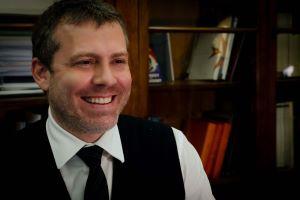
Lorenzo Casini was elected President of the Lega Serie A on 11 March 2022.
PAOLO DAL PINO

On 8 January 2020, the Assembly of the Lega Serie A elected Paolo Dal Pino as its new President. A few weeks after taking office, the new President, together with CEO De Siervo, had to deal with the impact of the Covid-19 pandemic on the championship, which was suspended in the first days of March and then resumed in June, after more than 3 months. In a very difficult situation, the 2019/2020 season is however completed with the awarding of the Coppa and the Championship. The following season (2020/2021) Serie A TIM restarted in late September, with a compressed calendar to leave time for the European Championship that was postponed, due to Covid-19, to June 2021, then won by the Italian national team in the final against England. In a complicated context, however, the interest of international funds to invest in the Italian championship was manifested and the sale of television rights for the foreign and domestic market was started. At the beginning of the year, on 21 January 2021, Dal Pino and De Siervo were confirmed as President and CEO of Lega Serie A. In the spring of 2021, the sale of Serie A television rights was concluded, with the assignment to DAZN of 7 exclusive matches and 3 co-exclusive with Sky, for a total of € 927.5 million on average per season for domestic rights alone for the three-year period 2021 - 2024. In the meantime, the Lega Serie A continues its planning and the push towards the creation of the media company, completing, under the direction of CEO De Siervo, the new International Broadcast Centre in Lissone, an innovative and cutting-edge structure that also houses the Var rooms. On 1 February 2022, President Paolo Dal Pino resigned, moving to live in Los Angeles for personal and work reasons.
GAETANO MICCICHE'
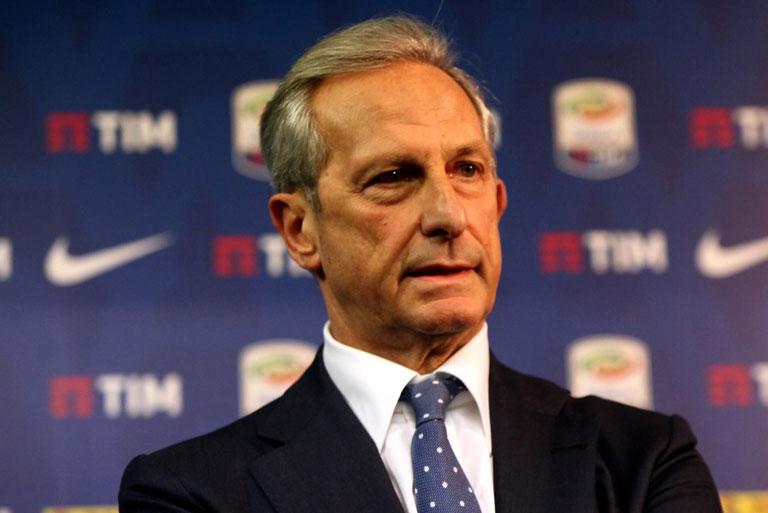
With the finalisation of the Governance, on 28 May 2018, Gaetano Miccichè, who had already been elected as President designate on 19 March, takes full powers at the head of the Confindustria del pallone. Towards the end of the same year, the Assembly elects Luigi De Siervo as Chief Executive Officer, who succeeds Marco Brunelli, who has in the meantime moved to the FIGC, from 18 February 2019. Lega Serie A experiences a phase of great drive and innovation, a new industrial plan and the design to transform the structure into a real media company are presented. On 19 November 2019, however, President Miccichè resigned.
GIOVANNI MALAGO'
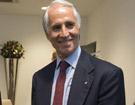
Giovanni Malagò was appointed as Special Commissioner on 2 February 2018, assisted by Deputy Commissioners Paolo Nicoletti and Bernardo Corradi. On 19 March, Gaetano Miccichè was elected President by acclamation with the positive vote of all twenty Clubs gathered in the Assembly. On 22 May, Marco Brunelli was elected as Chief Executive Officer and Maurizio Casasco was elected as an Independent Board Member, and on 28 May the Board was completed: Alessandro Antonello, Stefano Campoccia, Marco Fassone and Luca Percassi were elected as League Board Members, while Claudio Lotito and Giuseppe Marotta were designated to accompany President Miccichè to the Federal Boards representing the Lega Serie A.
MAURIZIO BERETTA

Giancarlo Abete’s leadership of the Lega Calcio in the role of Special Commissioner lasted less than 4 months and on the 18th of September 2009, the Assembly confirmed Maurizio Beretta as the new President and ratified his election from the 25th of August. With Beretta at the helm, there were major changes in the relationship between Serie A and Serie B and on the 1st of July 2010, they became independent entities giving life to two separate leagues. During his first mandate, and after negotiations which lasted a whole season culminating in the players’ strike on the first round of the 2011-12 season, a new “Collective Agreement” was signed with the AIC (Italian Players’ Association) on the 5th of September 2011. Beretta also oversaw the sale of the TV rights for the period 2012-2015. On the 18th of January 2013, he was reconfirmed as Lega Calcio Serie A President. During his second period in office, and after a record Assembly meeting that lasted 4 straight days in June 2014, he successfully completed the sale of the TV rights for the period 2015-18 to RTI and Sky.
ANTONIO MATARRESE

Antonio Matarrese was elected President, a position he had already occupied from 1982 to 1987, on the 8th of August 2006. In a testing moment for Italian football in the aftermath of the “Calciopoli” scandal, he stayed at the helm of the Lega Calcio for 3 seasons. In July 2007, he introduced the Nike football to Serie A, Serie B and Primavera (Youth) leagues. Under his leadership, he chose InFront as advisor to the Lega Calcio for the sale of collective TV rights from 2010 and changed the format of the TIM Cup final from a two legged affair to a single match in Rome, where in 2008, and for the first time, the trophy was handed out by the Italian President Giorgio Napolitano. After failing to be elected again, the president of the Federcalcio (Italian Federal Football Association) Giancarlo Abete was appointed as a Special Commissioner. His leadership lasted less than 4 months in what was a testing transitional phase in which clubs from Serie A and Serie B reached an agreement to create two separate bodies starting from July 2010 which would then be completed under the presidency of Maurizio Beretta.
ADRIANO GALLIANI
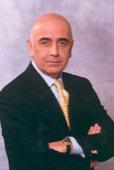
Adriano Galliani was elected President for the first time on the 9th of July 2002 and then re-elected on the 23rd of March 2005.
FRANCO CARRARO
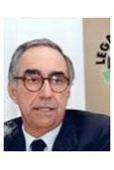
The first strike in Italian football (17th of March 1996), parameters brought down for Italian footballers and government commitment to guarantee protection to clubs at risk bankruptcy. All of this preceded Franco Carraro and was made worse by Italy’s group stage exit at the European Championships in the summer of 1996 in England, marking the end of Matarrese’s presidency at the Federcalcio (Italian Federal Football Association). Directors of Serie A and Serie B wanted assurances from the government on the transformation process for clubs to public companies and the spreading out of losses following on from the Bosman-ruling. The government adhered to the demands. Nizzola was elected President of the Federcalcio on the 14th of December 1996 and was succeeded at the helm of the Lega Calcio by Franco Carraro on the 21st of February 1997. Carraro started a major restructuring plan for the organisation of Italian professional football and immediately sorted out the new television agreement for the three year period 1999-2002, with the earnings split between clubs through an agreement that lasted 6 years. The Lega Calcio during his time in charge also presented new plans over the appointment of referees for matches which the Federcalcio approved in July 1998.
LUCIANO NIZZOLA
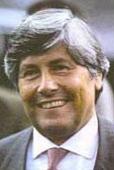
Serie A clubs were allowed to have a third foreign player and the championship went back to an 18-team format. In 1990, a new agreement was signed with RAI for the sale of TV rights and the fee was impressive: 324.999.000.000 lire for three years, just under double the value of the previous agreement. The spring of 1992 was characterised by a struggle with the union over the quota for foreign players, before an agreement was reached allowing 3 foreign players to be named on the list presented to the referee. On the 1st of July 1992, Nizzola was re-elected, but there were changes in the form of the television contract: state television broadcaster RAI obtained the rights until the 30th of June 1996, paying 423 billion, 109 million and 710.000 thousand lire. Telepiù, the first Italian Pay-TV also spent big for the rights to the early kick-offs in Serie B and the late kick-offs in Serie A for 3 years. It paved the way for the “Telecalcio” project, an initiative that finally took-off after several obstacles and lengthy meetings. Money poured into the clubs: 1.189 million in 3 years. The contract, that ran through until the 30th of June 1999, ended a dramatic season sparked by the groundbreaking Bosman-ruling on the 15th of December 1995.
ANTONIO MATARRESE
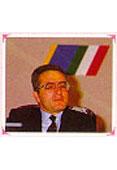
Antonio Matarrese became Lega Calcio President on the 10th of March 1982. A second foreign player was allowed from the 1982-83 season. In 1985, he presented a study which called for state intervention in football. The deficit rose to 200 billion, while a drop in spectators, the second betting scandal, the disappointment of the Italian national team at the Mexico World Cup in 1986 all played their part in the appointment of a Special Commissioner at the Federcalcio (first Carraro and then Manzella). Matarrese left his role at the Lega Calcio at the end of October 1987. On Sunday the 1st of November he was elected as Federcalcio (Italian Federal Football Association) President and he was replaced by Luciano Nizzola, unanimously elected on the 27th of November.
RENZO RIGHETTI
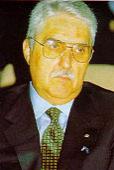
Renzo Righetti’s presidency marked the return of foreign players to the Italian top-flight: in May 1980 clubs were allowed to sign a player from a foreign football federation. It was a difficult decision to take in one of the darkest moments in Italian football with the game in shock because of the betting scandal which led to the disciplinary commission acting accordingly. New laws were introduced over players’ contracts which allowed the players at the end of a contract free to look for a team that would have to offer compensation to the former club calculated on the basis of specific coefficients. An Assembly meeting also decided on the liberalisation of sponsorship for the 1981-82 season. In the spring of 1981, Righetti was presented with the first opportunity to raise the price for the sale of TV rights. Fininvest announced publicly that it was willing to offer more than Rai, but Italy was not yet ready for a private TV broadcaster. As a result, and for three years, Rai held the rights, but only after 5 billion 816 million and 174 thousand lire. Due to health reasons, Righetti ended his mandate 3 months before it came to an end.
FRANCO CARRARO
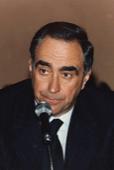
With the resignation of Griffi, Franco Carraro, President of the Federcalcio, returned as Special Commissioner of the Federcalcio (Italian Federal Football Association) only to resign in May 1978.
1978 was also the year of the illegal transfer market, with the intervention of Italian Police Forces and football coming to a standstill. The Lega Calcio calls on clubs into a lockdown and “suspending all activities.” The government is forced to intervene, and in doing so redefines the role of the footballer and the transfer market re-opens at the Totocalcio headquarters.
ANTONIO GRIFFI
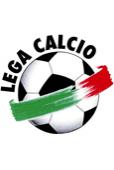
On the 9th of October 1976, Antonio Griffi was elected and was immediately faced with the prickly issue of contracts relating to player transfers. A month later he was able to set out his plans which amongst other things including an 18 team Serie A and Serie B as well as limits on signings based on the spending power of clubs. He resigned on the 18th of July 1977 after 20 clubs out of 36 requested a Special Commissioner for the Lega Calcio to handle the major problems that had emerged at that time. The deficit rose to a total 50 billion.
FRANCO CARRARO

Franco Carraro became Lega Calcio President on the eve of the 1973 -1974 season. The game asks for more money from CONI (Italian Olympic Association), believing it is entitled to a greater share of the profits, while Carraro was also faced with the tricky Scala situation which resulted in the Lega considering the player’s contract terminated.
ALDO STACCHI

In August 1965, the Lega Calcio chose its new President: Aldo Stacchi. He would remain at the helm until March 1973, apart from a brief spell away from the role after Italy’s shock defeat to North Korea at the 1966 World Cup in England. The number of teams in Serie A was reduced from 18 to 16 and came into force in the 1967-68 season while there was a block on foreign players. On the 13th of July 1968, the AIC (Italian Players’ Association) was formed and led by Sergio Campana. In the summer of 1970, for the first time the Serie A and B calendar was decided by CONI (Italian Olympic Association) computers. After his resignation on the 14th of February 1973, clubs from the Lega Calcio awarded him with a Golden Ball in memory of his presidency.
1958-1962 GIUSEPPE PASQUALE 1962-1964 GIORGIO PERLASCA 1964-1965 ARTEMIO FRANCHI

Immediately after the loss to Northern Ireland in Belfast (15th January 1958), the Lega Calcio elected a new President: Giuseppe Pasquale. Andrea Rizzoli, Umberto Agnelli and Angelo Moratti, owners of Milan, Juve and Inter respectively, also entered the board in a bid to highlight the autonomy of the clubs towards the Federcalcio (Italian Federal Football Association), especially when it came to the issue of foreign players. On the 3rd of August 1958 a speech from CONI (Italian Olympic Association) President Onesti, attacked club presidents in which he defined them “rich fools”. The accusation came over spending too much money. Barassi was forced to resign from the presidency of the Federcalcio which appointed a Special Commissioner in the form of Bruno Zauli. On the 30th of June 1959, Zauli’s role as Special Commissioner came to an end. Pasquale was confirmed on the 21st of July 1959 as Lega Calcio President while Umberto Agnelli was elected FIGC president on the 9th of August and held office until 1961. Pasquale stayed on another year before handing over to Giorgio Perlasca, elected on the 24th of July 1962 and at the helm until the 12th of July 1964. Perlasca surprised everyone with his departure, leading to Franchi as Special Commissioner, when he realised that he was unable to carry out his programme: "Maximum organisation and smaller debts".
RAPALLO NASCE LA LEGA NAZIONALE

Between the 14th and 16th of May, the clubs belonging to the Federcalcio (Italian Federal Football Association) created a new movement that gave life to the Lega Calcio in Rapallo with headquarters in Milan. The first President was Piero Pedroni, who oversaw proceedings for 4 years until 1950 and was in charge during what was the longest championship in history, the 1947-48 season, with 21 teams. Saverio Giulini was his successor and reformed the Serie A and Serie B championships, reducing them to an 18 team format. The national team’s defeat to Hungary (0-3) in Rome on the 17th of May 1953 triggered changes regarding foreign players in the Italian game. The Lega reinstated the old rule, under which payments for player signings had to be carried out through the Federcalcio. In the meantime, there was an attempt to maintain the commitment made in 1951 with squad sizes set at 16 players, with fixed wages and bonuses. In 1955-56 the Lega Calcio experimented with foreign referees in the final stage of the championship and for the first time a league match was broadcast live on television, brought forward to the Saturday, to avoid any negative consequences on the takings of the other clubs.










